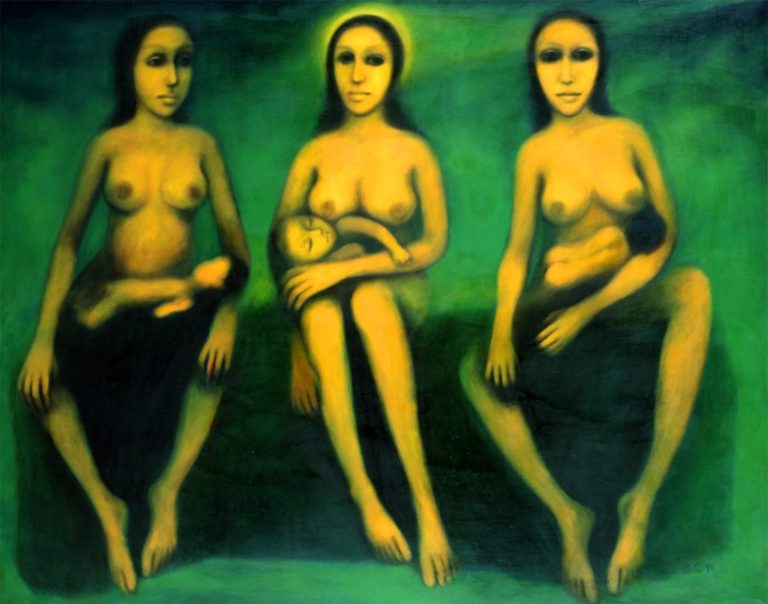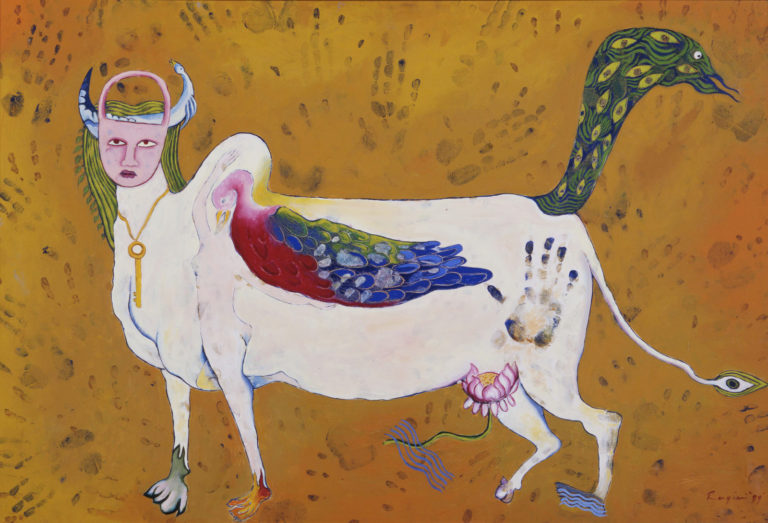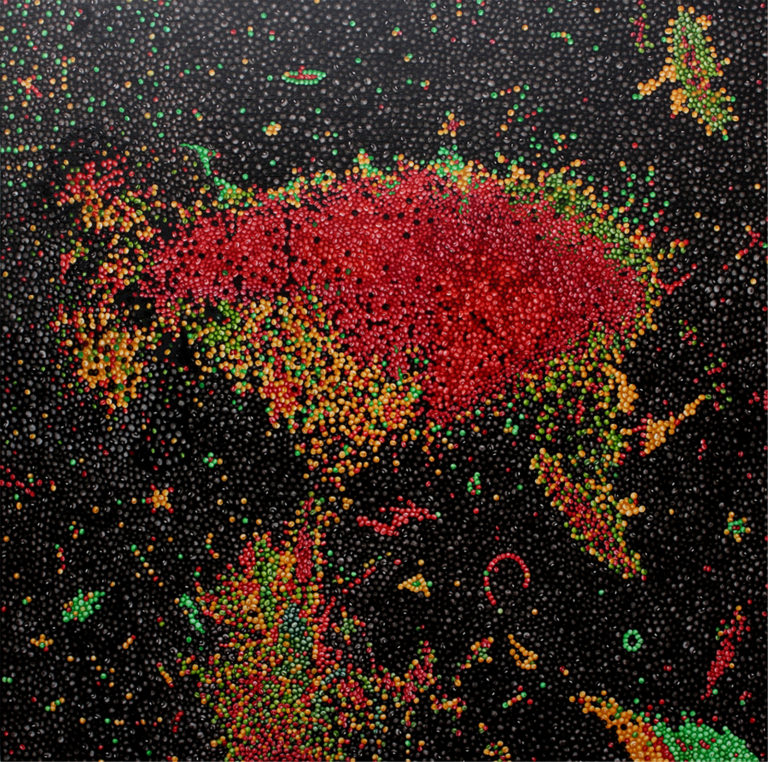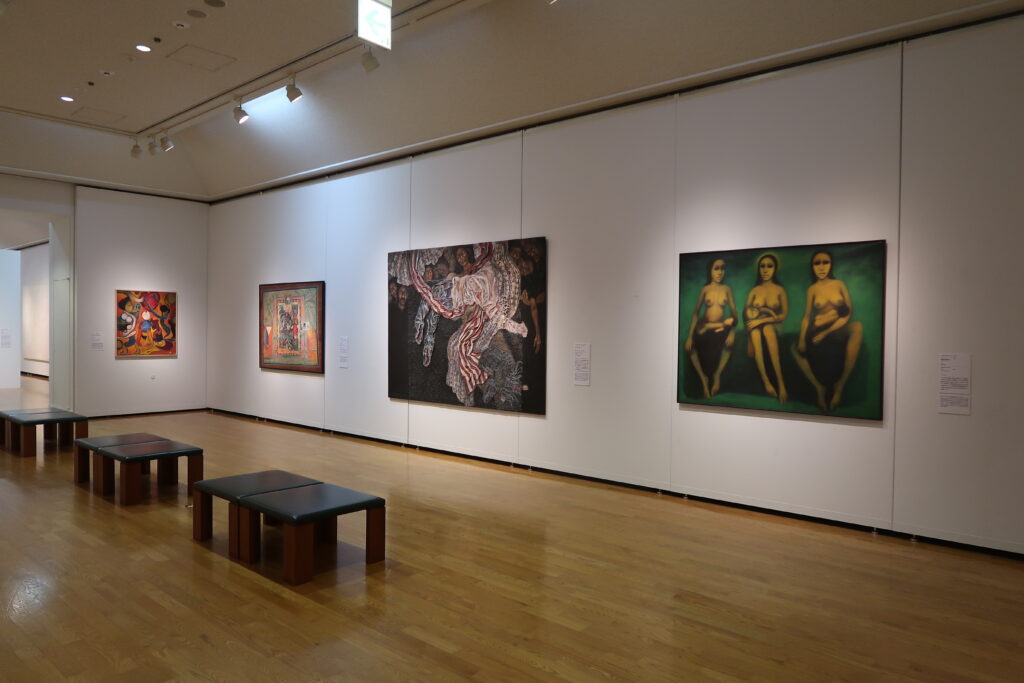
Message — 50 Years of Women Artist in Asia
- Period
- Mar 21, 2020 〜 Jun 23, 2020
- Venue
Fukuoka Asian Art Museum Asia Gallery
Female artists have produced artworks with strong messages that respond to social issues happening in different places in the world. In the 1960s and 70s, Europe and the United States experienced Feminism Movement that objected the male-centered social system and sexism and pursued to develop female rights. The art world responded to the movement and produced artworks that engaged with the movement. Asia was also a part of the movement. In a society where differences in race, social class, religion, and ethnicity create various social issues that also influence their view on gender, the artists, since around the 1970s, started encountering their femaleness under the various oppressions and developed their sincere forms of expression, which still continues today. In contemporary society, the definition of femaleness has been questioned based on the understanding that human sexuality is essentially diverse, and more artists have become aware of the existing gender biases in our everyday life and sharing their experiences through the internet.
As the first collection exhibition of the FY2020, this exhibition introduces the works of female artists in the Fukuoka Asian Art Museum collection created between the 1970s and today. The female artist’s works make up only eleven percent of the FAAM collection. Among them, this exhibition focuses on the works that deal with the question of what is to be a woman in chronological sections: the 1970s-80s, 1990s, and post-2000s.
The 1970s-1980s: Questioning the conditions of being a woman
In the 1970s and 80s, people in many Asian countries suffered from serious military conflicts and dictatorships, a lot of social problems related to racial, class, and religious conflicts erupted. The social circumstances around that time had a significant impact on gender consciousness amongst Asian women who were struggling against the persistent patriarchy and traditional values. In art, women artists became interested in themselves and their societies. They started the exploration of new artistic expressions by addressing the issue of “the conditions of being a woman” while reclaiming their own bodies, which had always been an object to be depicted. Europe and North America experienced the rise of Women’s liberation movement (the first wave was a movement for gender equality that began in the first half of the 19th century with women’s suffrage in Western countries.) In the late 1960s, while the movement pushed a review of old values and gender roles, they actively demanded the realization of gender equality. Asian women artists also started to form groups and strengthen the ties of solidarity linked to the social changes in the Euro-American world.
This section features artworks that reflect the social conditions in each country including Anupam Sud’s prints, a founding member of Group 8, a group of printmakers formed in India in 1968, and Imelda Cajipe Endaya’s paintings, a member of the women artists group called KASHIBULAN (Women in Art and Emerging Consciousness) in the Philippines, where gender awareness was rising at the time.
The 1990s: Gender as a shared concept
The 1990s was a time when many women artists began to emerge in Asia. On the premise that human sexuality is inherently diverse, the movement that raised the issues of gender discrimination and its suffering hidden in our everyday life went on to spread around the world. While inheriting the awareness of social issues in the 70s and 80s, the concept of gender (means socially created sexual difference) was widely shared among Asian women artists
. As the third wave of Women’s liberation movement that asked for a free choice of lifestyle regardless of gender identities was spreading globally, many artworks with strong messages that questioned the social status and roles of women were produced during this period. This section shows the following artworks including paintings by Eng Hwee Chu whose theme is to question the role of women based on her experience of childbirth after she married into her Christian husband, and photography works by Amanda Heng who tries to reconcile relationships between mother and daughter as well as being a woman.
The post-2000s: An increasingly complex society
Since the 2000s, the issue of women’s identity has been talked in a multifaceted manner compared to the 90s due to the influence of multiculturalism, which aims to coexist with diverse cultures and multiethnic communities. The mode of artistic expression has also become diverse from using technology to reverting traditional techniques. Notably, women artists take advantage of the techniques (manual works) and materials, which have been both associated with women’s housework in the home and explorer different ways of expression than those of men.
This section introduces the contemporary works, including Anoli Perera’s sculpture-works, which represent a complicated position of women by using lacemaking, Jung Jung-yeob’s paintings depicting beans that have apotropaic meaning in Korean cuisine, and Nazlee Laila Mansur’s paintings based on an actual incident of violence against women.
| Venue | Fukuoka Asian Art Museum Asia Gallery |
|---|---|
| Admission | Adult 200 JPY / High School&College 150 JPY / Free for Junior High School and Under |
| Works | Painting, print, photography, sculpture, video and others. |
| Organiser | Fukuoka Asian Art Museum |
| Contact | Fukuoka Asian Art Museum Tel: 092-263-1100 |





_2000-768x1258.jpg)







